While in Spain for our annual training camp we had the opportunity to film a number of our athletes running, which gives rise to some interesting points for discussion. Thanks to all the athletes for agreeing to their pictures being shared.
Firstly we will look at landing patterns and the position of the knee relative to the ankle upon landing. You can see in the images below that we have quite a lot of variation within a relatively small sample of athletes. Forefoot, midfoot and heel strike landing patterns are all demonstrated.

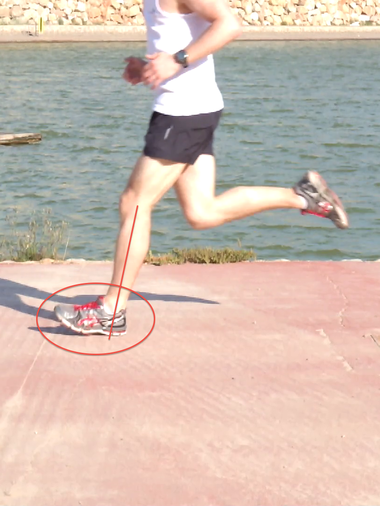
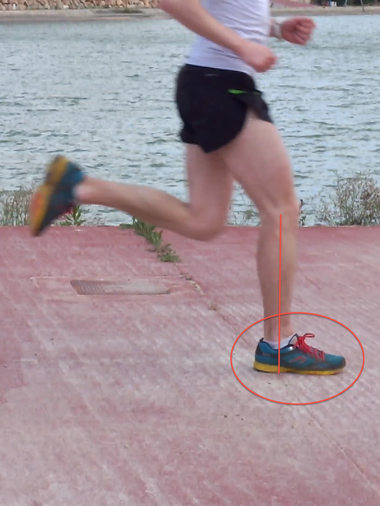
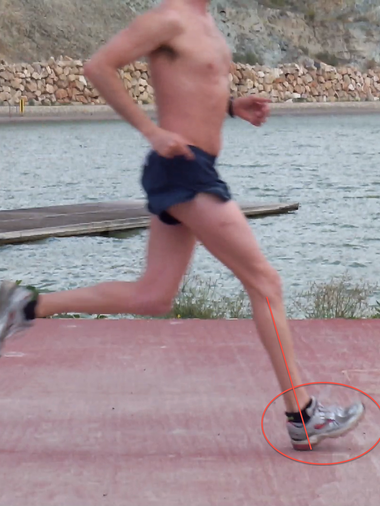
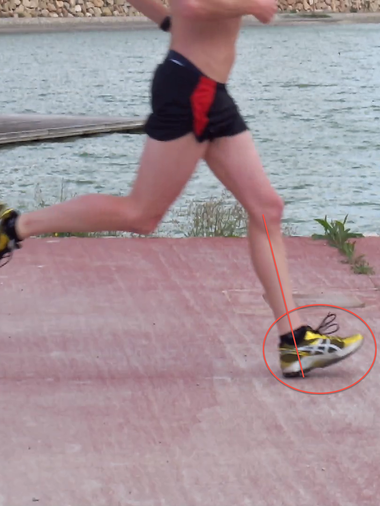
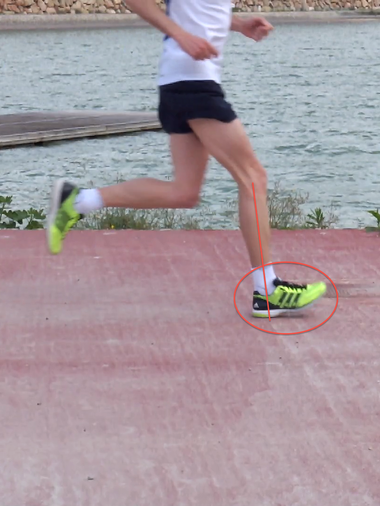
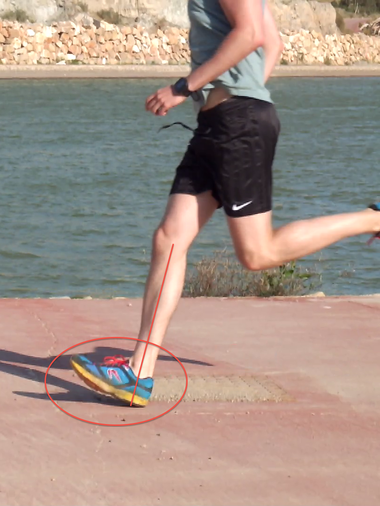
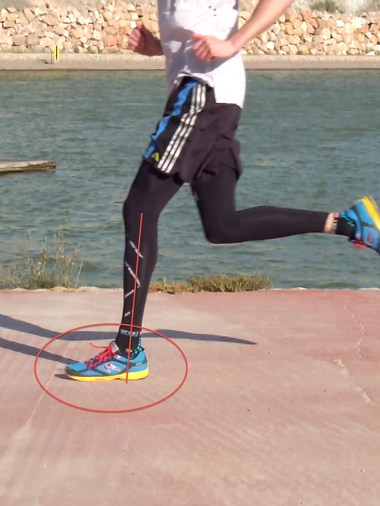
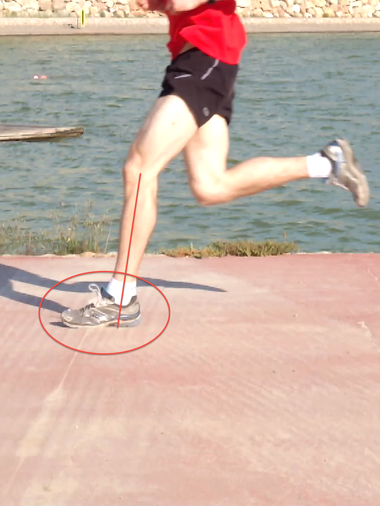
You might think, when you look at them, that these images represent slightly different phases within the gait cycle. They are in fact the same phase but this is one part of the gait cycle that varies widely between individuals. I suspect you will see less variation when it comes to the position of the knee relative to the ankle among highly trained (sorry guys!) elite runners and triathletes. Foot strike patterns however remain very variable even among elite level runners. So who do you think has ideal technique?
We also made some interesting observations from behind thanks to Amanda chasing each athlete down the side of the lake barefoot on her bike with a GoPro mounted on her handlebars. Again you will see quite different movement strategies by the different athletes. In most you will see some degree of drop in the pelvis towards the swing leg known as lateral pelvic tilt. You will also see some people shifting their trunk towards the stance leg. This can come from the lumbar spine (low back) and thoracic spine (mid back) side flexing towards the stance leg or a section of the spine doing all the work (see third picture below). In the third image, the mid back is quite upright but there is significant side flexion in the low back.
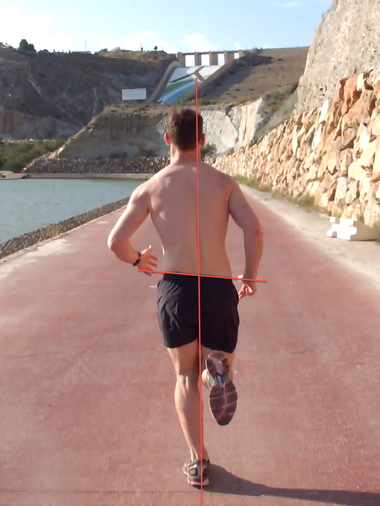
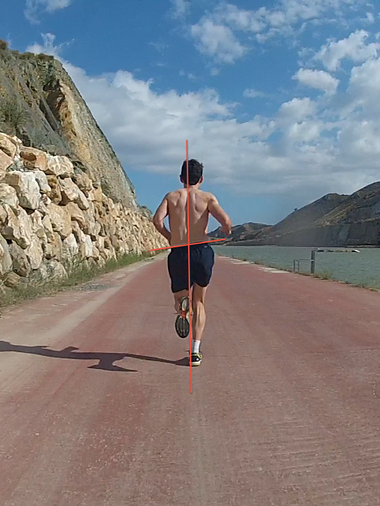
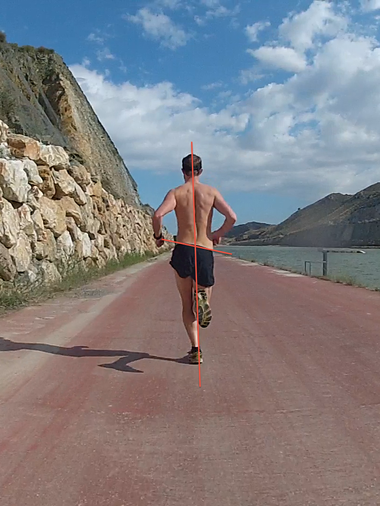
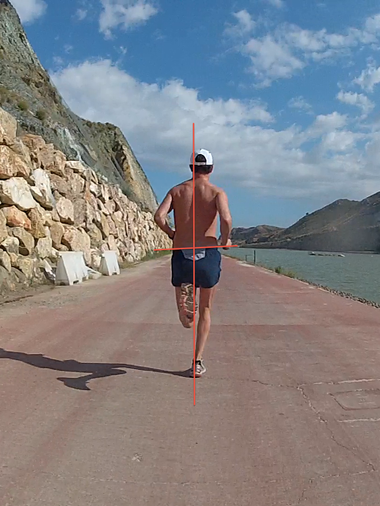
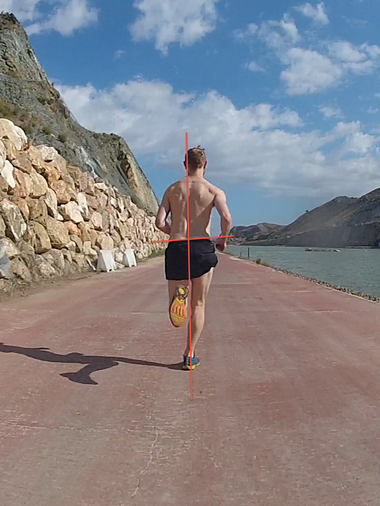
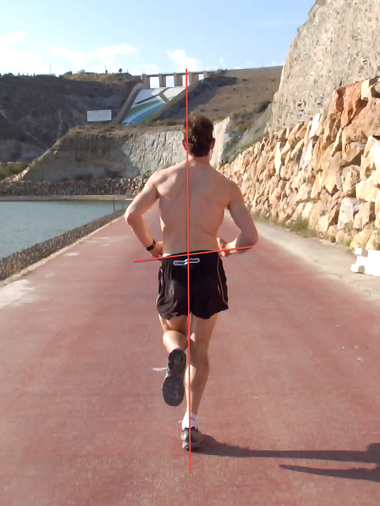
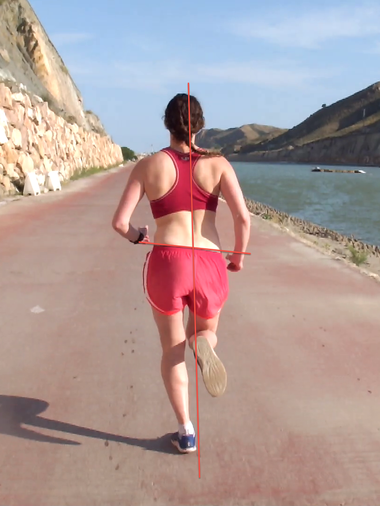
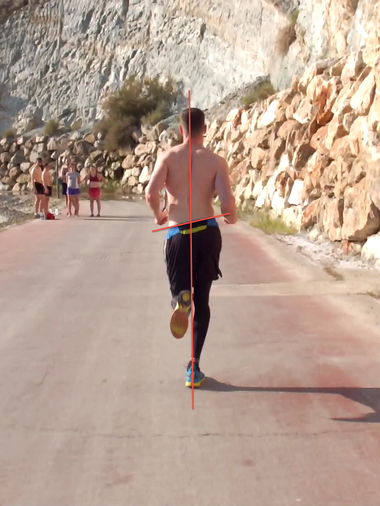
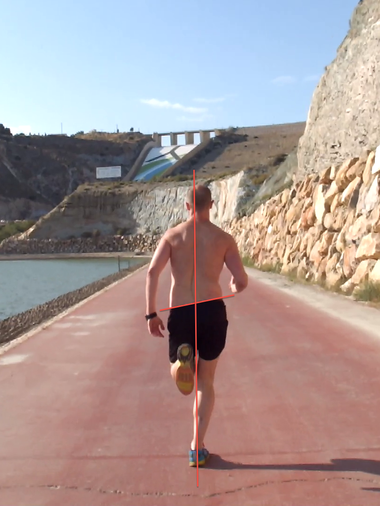
So who has ideal alignment when viewed from behind? There is a lot more to gait analysis than looking at the trunk and pelvis during mid stance (the phase of gait in the photos) but this is a good place to start. We have not yet looked at arm swing or the path that the lower limbs follow during the different phases of the gait cycle.
When we perform our video swim analysis, our athletes are often quite surprised at what they see and things were no different when we reviewed the running videos. We often think we move in a particular way but the reality can be quite different. Our awareness of body position and movement can change for all sorts of reasons. Injury is a common cause. All sorts of things also influence how we move, even our emotions. Have you ever run angry? Habitual postures also play a part. I have no doubt that sitting for eight to ten hours a day has a profound influence. Visual feedback is a powerful tool and making the above athletes aware of how they move is the first step towards improving the control of the pelvis and trunk while running.
We were lucky enough to have Gail teaching yoga while we were away. If you have been to Gail’s yoga classes you know that she places a big emphasis on self-awareness throughout the class. Not only was Gail’s yoga a great way to build a team, relax and recover from the day’s activities, I think it was also a very valuable exercise to improve awareness of your body, how your body moves and how movement influences your body. I can certainly remember those stretches using the yoga belts!
Is it just me that finds this stuff absolutely fascinating? We will discuss the answers to the questions above and more in detail over coffee this weekend I hope!
See you on Saturday. Tim (LFTC Coach).
really interesting set of photos. For the first set it looks as if the majority of people are over striding ie the foot is landing in front of the centre of gravity . Whats more interesting is that photo 1 is pretty much a forefoot striker whilst photo 4 is a heel striker, whilst both appear to me to be bringing their foot down in front of the centre of gravity. Is that your analysis, and if so would you try to get the athletes to modify their landing? cheers Mick
Great minds think alike Mick! Our session on Tuesday night, which was technique focussed, addressed this issue during our strides before and after the main set. Any coaching ‘pearls’ you have for us to address this issue? Tim (LFTC Coach).
I definitely noticed an improvement in technique on Tuesday. During the actual drills, those athletes who have been filmed definitely had a greater awareness of their bodies and positioning. Athletes were able to hold this technique through longer periods even during fatigue towards the end of the set.
I guess it is a bit like seeing that dreaded race picture that shows you how you actually are running and not how you think you look!
I don’t think l can articulate how amazing the yoga is, how much stronger and aware l am of my posture & breathing (have tried for the last 30 mins on this) Gail, fancy writing a blog one week?
Amanda
Or perhaps it was your coaching on Tuesday night Minky? After all you were coach of the year in 2012! Tim (LFTC Coach)
Great article, thank Tim! I need to overhaul my running style to kick a chronic knee issue so will be a keen student at the technique sessions as soon as it’s ok to run again.
How do I find out about/sign-up for Gail’s yoga sessions in London?
Thanks,
Abby
Hi Abby. Gail’s yoga classes, while popular with our club members, are not run by the club. I will pass your details on to Gail and she can give you the low down on when and where they are happening and how to get involved. Tim (LFTC Coach)
Hi Tim
fast feet is my favourite running drill. Its easy to explain to a large group(!) and addresses a number of issues. One thing I notice with our group is people have tendency to bend in the middle and look at the ground when doing it – almost as if they don’t trust their feet. So I try to emphasize running tall, minimizing contact time with the ground. I know you’ve blogged about cadence before but to increase speed I’d concentrate on increasing cadence before stride length, again fast feet helps with this. It certainly helps to have this mantra in your head when tiring towards the end of a race, and I find it helps when running on uneven ground (which quite often tri run courses are).
Bare foot strides are also good, giving real positive feedback on where the foot is landing.
Hopping also (hop a couple of times on each leg, 4-5 strides, hop cycle again) If you overstride when hopping you’ll go backwards. (hopping can also show up discrepancies in leg strength)
Pawing the ground – consciously pulling the lead foot back, but I find this really hard to explain (probably because I’m unco-ordinated myself!) to a big group so don’t tend to do it.
cheers
Mick
ps if you read the article about Mo Farah’s training in the Guardian sport section before the marathon Salazar mentioned he’d worked alot on Farah’s biomechanics and wished he’d had him earlier. From what I’ve read Salazar himself worked hard on his own biomechanics, and at the time he was winning marathons and setting world bests his physiological markers were lower than his contemporaries but his biomechanics were better enabling him to win races.
Mick
Great post, cheers.
Nice Nick cheers!